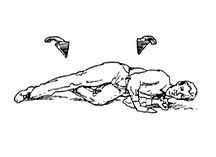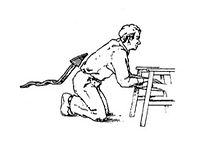FALL PREVENTION TOPICS
The Facts About Falls | Medication and Fall Prevention | Physical Activity and Fall Prevention |
For Senior Adults, Families and Caregivers | For Health Care Providers | Local Service Coordinators/Health Educators
FOR SENIOR ADULTS, FAMILIES, AND CAREGIVERS
Have You or a Senior Adult You Know Fallen In the Past Year?
If so you’re not alone! About 1 out of every 3 Americans fall every year. Falling can cause serious injury such as broken and fractured bones and even brain trauma which can reduce independence. The good news is that you can prevent falling by taking a few simple steps to keep yourself or a senior adult in your life safe.

RISK FACTORS
-
Poor mobility
(balance problems,
muscle weakness) -
Vision problems
-
Medication side effects
-
Environmental/situational hazards
(being in a hurry, no handrails on stairs/in the bathroom, unsecured throw rugs)
-
Diseases and long term illnesses
(Parkinson’s, Osteoporosis,
high/low blood pressure) -
Fear of falling
-
Clothing and footwear
Talk to Your Doctor About Falling!
Your doctor may or may not address falling with you during your regular check ups. If he or she does not, it doesn’t mean they don’t think reducing your risk for falling is important; it is easy to forget to mention it in a limited amount of time. That’s why you should bring up the subject with your doctor if he or she does not. Here are some examples of questions that patients commonly ask their doctors about falling:
-
What should I do after a fall?
-
How can I prevent a fall?
-
Are any of my medications making me unsteady?
-
Is there a test that can tell if I am likely to fall?
-
What medical conditions may increase my risk of falling?
-
What kind of exercises can help keep me from falling?
-
Should I see a specialist?
What To Do If or When You Fall?
Panic is often your first reaction after falling. It is important to try not to panic because the way you react after a fall can cause more injuries than the fall itself. If you try to get up quickly or in the wrong position, you may make an injury worse.
Before you do anything, remember to take several deep breaths and determine if you are hurt. If you believe you are injured, do not get up. Instead call 911, use your Lifeline to call for help or get help from a family member. While you wait for help to arrive, try to cover yourself with a blanket, jacket, or throw rug to keep warm.
Steps You Can Take To Reduce the Risk of Falling
-
Exercise Regularly. Strong muscle and bones help you move around with ease. Talk to your doctor and start slowly if you are a beginner.
-
Have Your Eyes Checked Yearly. Poor vision is associated with an increased risk for falling.
-
Improve the Lighting in Your Home. Use night lights and light bulbs with the maximum wattage safe for your light fixtures.
-
Talk to Your Doctors and Pharmacists about the Medications You are Taking. Taking 4 or more medications increases the chances for interactions and intensifies side effects that may contribute to your chances for falling.
-
Remove Hazards in Your Home Home modification does not have to be costly. By following simple steps, you can reduce the risk of falling at home.
-
Use Caution on Slippery or Uneven Surfaces. Its always important to know where your feet are and take precautions transferring to different surfaces.
-
Don’t Rush! Take your time, especially when getting out of bed or standing up if you have been lying down or sitting for an extended period of time.
-
See a Physical or Occupational Therapist if you are afraid of falling. These visits are covered by Medicaid and Medicare if you are referred by a physician.
-
Wear proper clothing and footwear. This includes shorter pants, skirts and bathrobes, supportive rubber soled, low heels. Thick rubber solesincrease the risk of falling because it is harder to feel the ground below your feet.
Helpful Videos
If you are not injured, follow these steps provided by the American Academy of Orthopedic Surgeons to get up from a fall safely:


Try to fall on your side or buttocks.
Roll over naturally, turning your head in the direction of the roll.
If you can, crawl to strong, stable furniture like a chair, and pull yourself up. Approach the chair from the front and put both hands on the seat.

Slowly, begin to rise.
Bend whichever knee is stronger,
keep your other knee on the floor.

Slowly twist around and sit in the chair.
Fall Prevention Tips
Floors
-
Remove rugs or use double-sided tape or non-slip backing so rugs won’t slip
-
Keep objects off floor and stairs
-
Coil or tape electrical cords next to wall to prevent tripping
Stairs & Steps
-
Fix loose or uneven steps
-
Turn on light at the top and bottom of stairs; install a light if one isn’t present; use switches that glow in the dark
-
Change light bulbs, ask family or friends for help
-
Fix loose handrails; handrails should be as long as stairs
-
Attach carpet firmly to every step; use rubber treads on uncarpeted stairs
Kitchen
-
Move items in cabinets to bottom shelves, at waist height
-
Use a sturdy stool with a bar; never use a chair as a stool
Bedroom/Bathroom
-
Place lamp close to the bed within easy reach
-
Use night lights
-
Put non-slip mats in the tub or shower
-
Install grab bars in tub and next to toilet
Other Prevention Measures
-
Exercise regularly; it adds strength and improves balance and coordination
-
Ask your doctor or pharmacist about medicines that make you sleepy or dizzy; review all medications and supplements with your physician regularly
-
Get up slowly after sitting or lying down
-
Wear sturdy shoes with thin, non-slip soles
-
Improve the lighting in your home
-
Use reflective tape at the top and bottom of stairs
-
Keep emergency numbers in large print near phones
-
Consider using a personal emergency medical alert system
-
Have vision screened regularly and wear corrective lens as prescribed
Fall Prevention and Caregivers

A recent study by the National Alliance for Care giving and AARP discovered that in about 25% of all homes, a person over the age of 18 had been a caregiver to an adult over the age of 50 at some time during the previous year.
The work of an informal caregiver is important and can include providing everything from minimal assistance with personal care and homemaking and errands to 24-hour assistance.
There are many resources available for caregivers. Your local Council on Aging are a great place to look for additional resources. In Hamilton County, the Council on Aging of Southwestern Ohio has many resources available for caregivers. Visit their website at http://www.help4seniors.org.
Web Information References
To access references for information found on this website, please visit the References page.
